01 Workshop Recap
From January 13 to 15, 2025, the First Workshop on Intelligent Computing for Spectroscopy at Complex Interfaces was successfully held.
Hosted by the Tan Kah Kee Innovation Laboratory, the workshop was co-organized by the College of Chemistry and Chemical Engineering at Xiamen University, the Saban Institute of Micro-Nano Science and Technology at Xiamen University, the State Key Laboratory of Physical Chemistry of Solid Surfaces, the Beijing Institute of Scientific Intelligent (BISI), DP-TECH, and the DeepModeling Community. The event covered a wide range of topics, including vibrational spectroscopy, solid-state NMR, X-ray spectroscopy, atomic force microscopy (AFM), and data-driven methods for spectral analysis, with hands-on tutorials and case studies.
Over 200 faculty members and students from more than 50 universities and research institutions across China registered for the workshop. A total of 80 participants attended in person, while more than 80,000 viewers joined online throughout the three-day event.
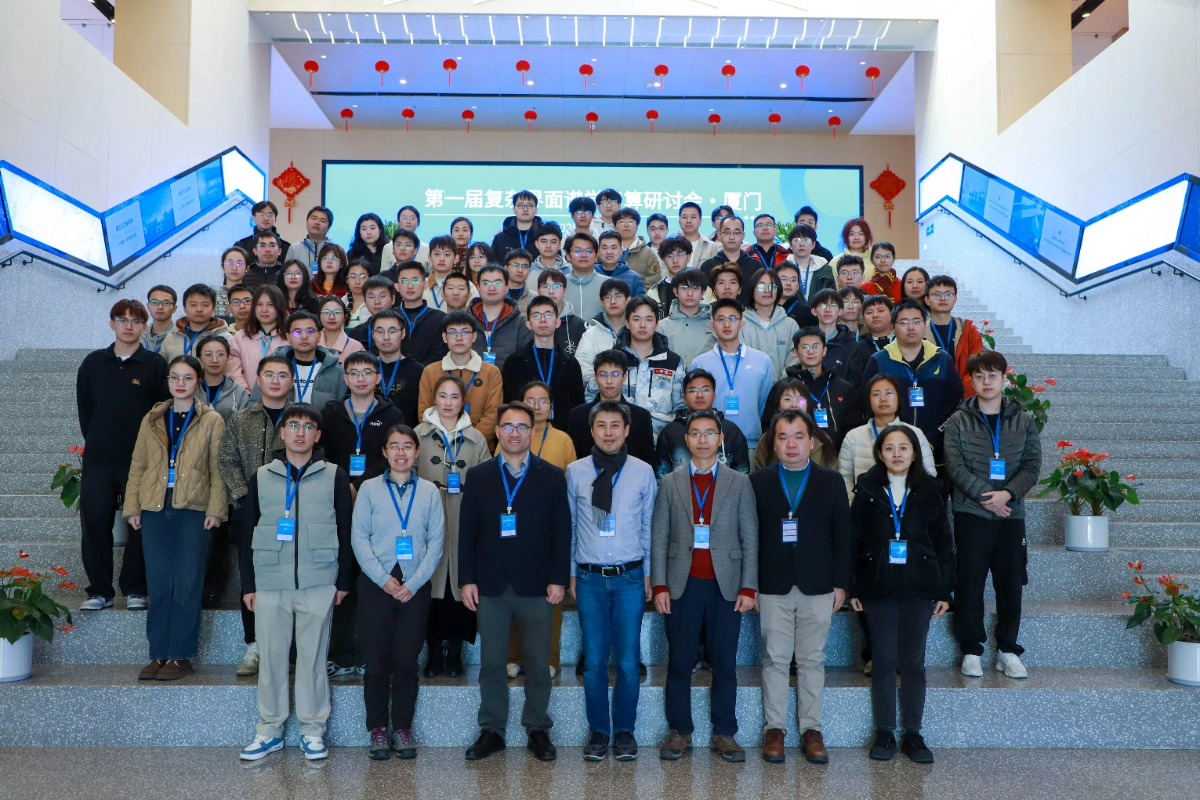
02 Opening
The workshop officially commenced on the morning of January 13, with opening remarks delivered by Professor Jun Cheng, Executive Deputy Director of the AI4EC Lab and the College of Chemistry and Chemical Engineering at Xiamen University.
Professor Cheng highlighted the growing importance of computational spectroscopy, which integrates theoretical calculations with experimental techniques. He emphasized that with the rapid development of artificial intelligence (AI), researchers are now closer than ever to solving spectroscopic challenges in complex, real-world environments. He also shared that the AI4EC Lab is committed to advancing AI-assisted computational spectroscopy, both in theory and algorithm development, and to collaborating with experts to decode the structure-property relationships at complex interfaces. Finally, he expressed his gratitude to all speakers and participants who traveled from afar to attend the workshop.
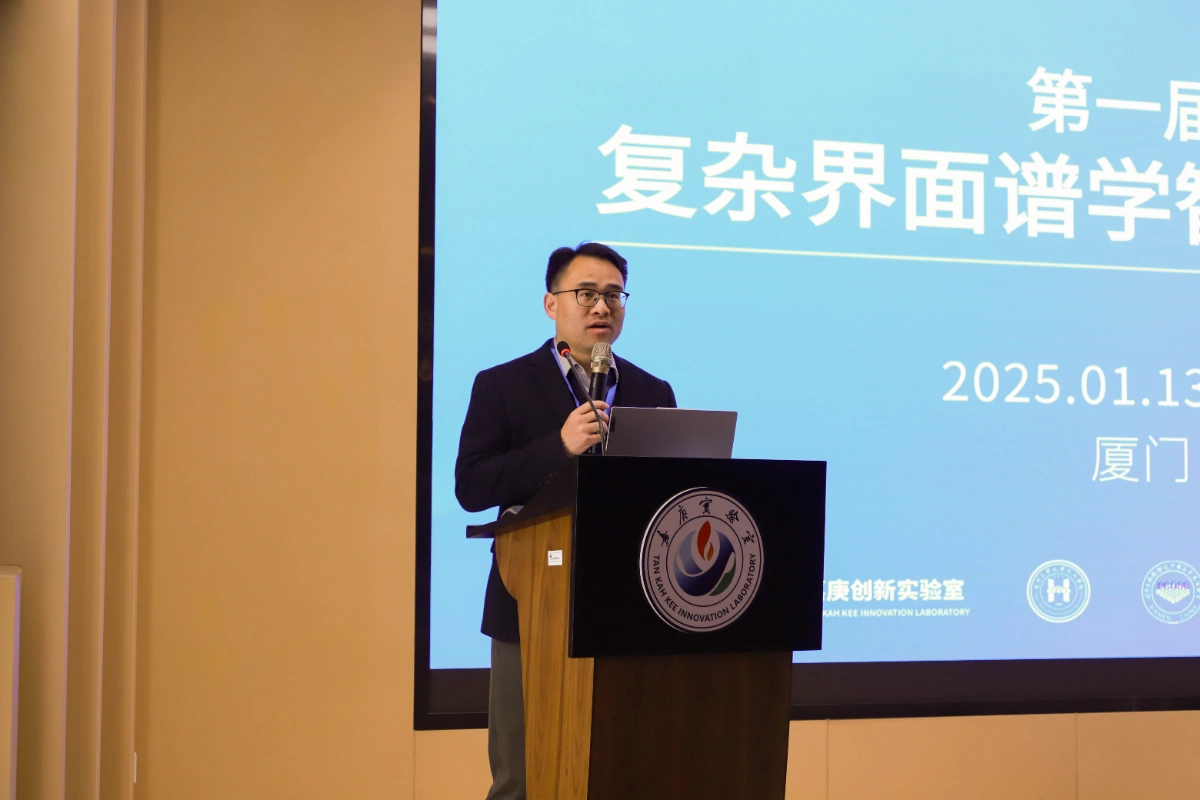
03 Reports
The workshop featured presentations from leading experts in computational spectroscopy, who shared their latest research advancements in simulating and interpreting various spectroscopic techniques.
Professor Yuki Nagata from the Max Planck Institute for Polymer Research (Germany) began with an introduction to Sum Frequency Generation (SFG) spectroscopy, explaining how accurate spectral data can be obtained theoretically. He then demonstrated methods for comparing experimental and theoretical spectra, revealing deep physical and chemical insights, and showcased practical applications of SFG in real systems.
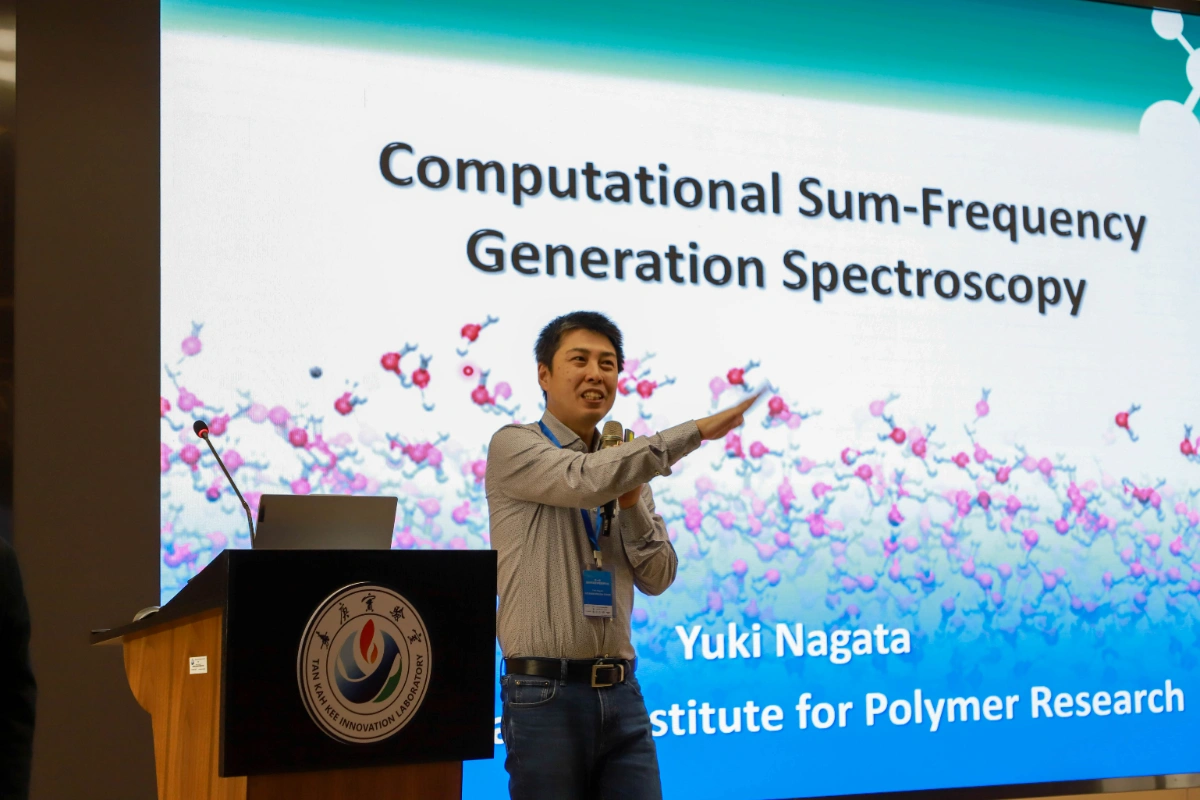
Professor Marialore Sulpizi from Ruhr University Bochum (Germany) delivered a talk titled "Vibrational Spectroscopy from Ab Initio Molecular Dynamics Simulations." She provided a clear and accessible overview of the theoretical foundations of vibrational spectroscopy based on ab initio molecular dynamics. She then highlighted how the integration of ab initio methods and machine learning offers unique insights into critical systems such as ATP-Zn ion interactions and interfacial electric double layers, offering participants a fresh perspective on these important topics.
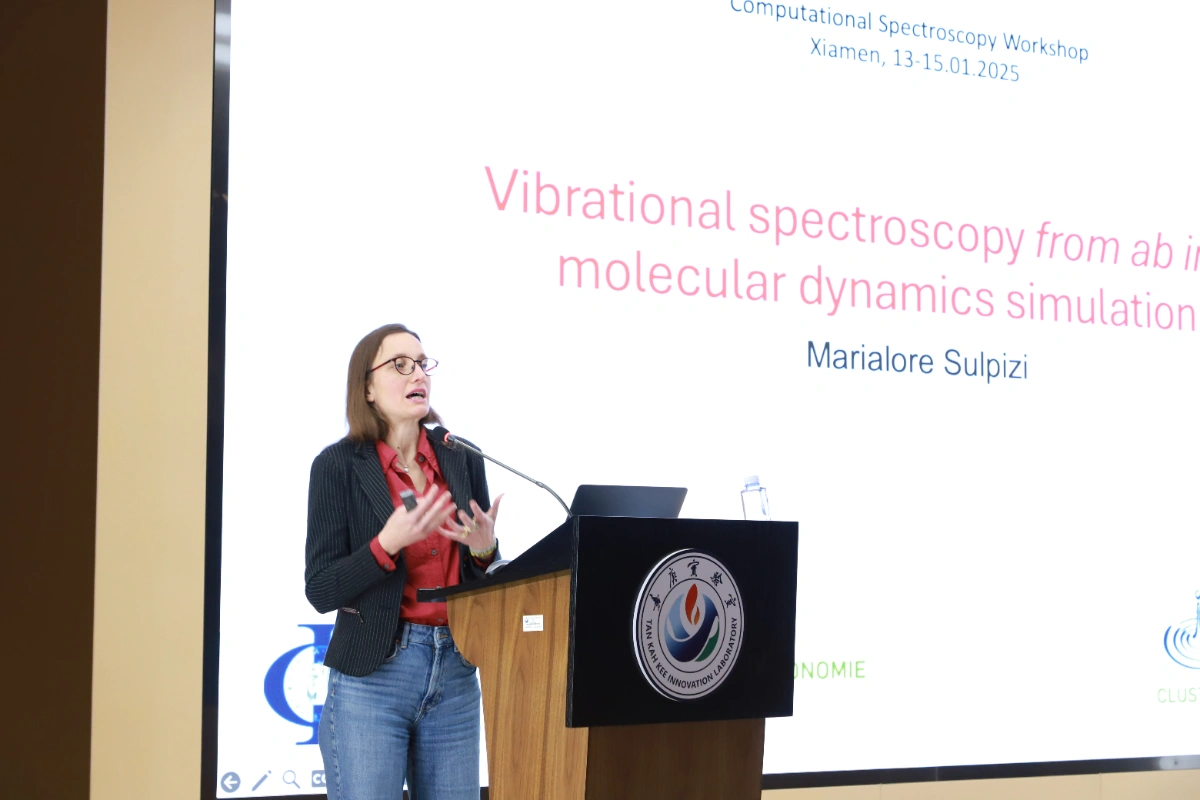
Professor Bingwen Hu from East China Normal University discussed the applications of in-situ Electron Paramagnetic Resonance (EPR) imaging in studying lithium deposition, lithium dendrite formation on graphite surfaces, oxygen dimerization and trapped O₂ generation in layered lithium-rich cathode materials, and the electronic properties and structural degradation associated with chromium dissolution.
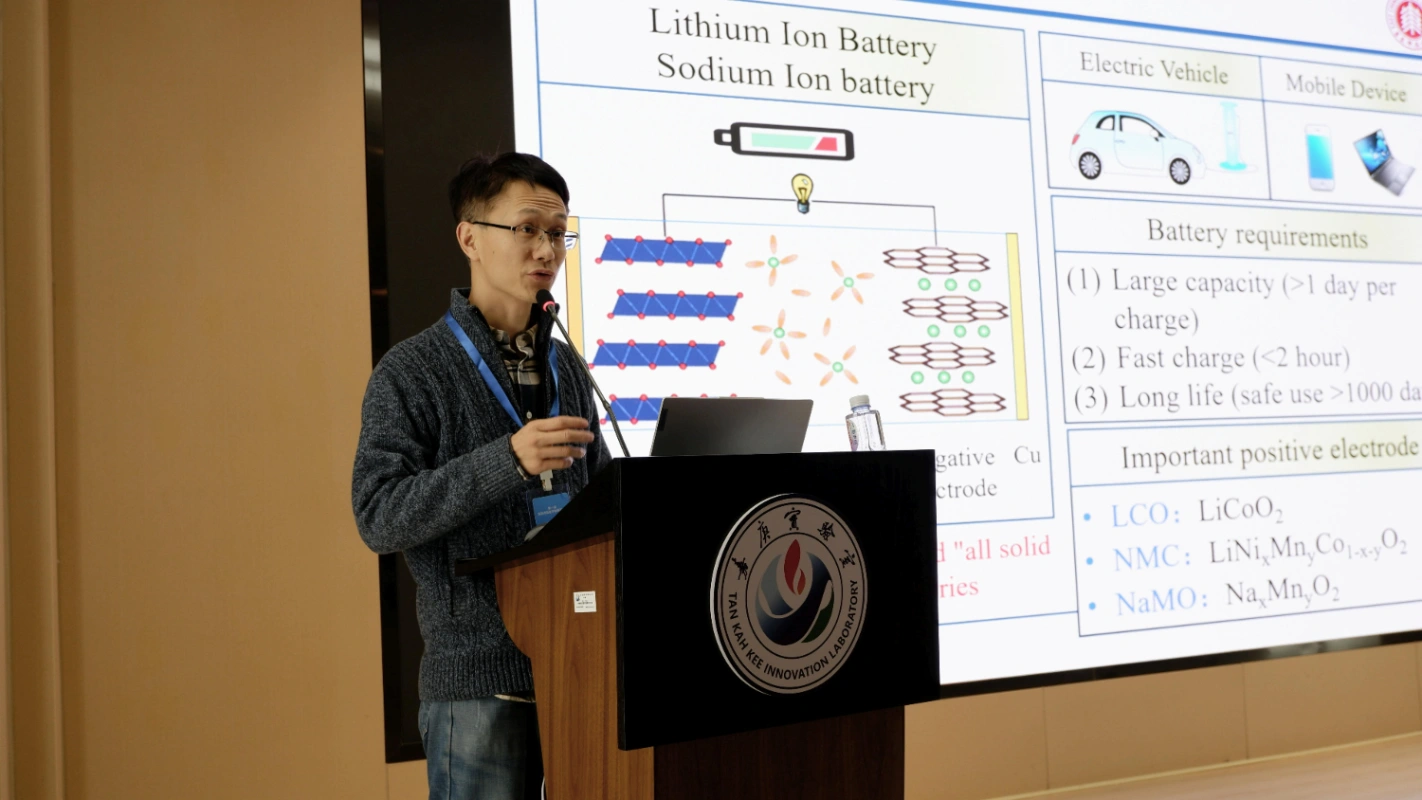
Associate Professor Fujie Tang from Xiamen University introduced the fundamentals and applications of X-ray absorption spectroscopy (XAS), emphasizing the challenges in interpreting experimental XAS data and the urgent need for theoretical calculations. He then delved into computational frameworks for XAS based on both ground-state and excited-state calculations.
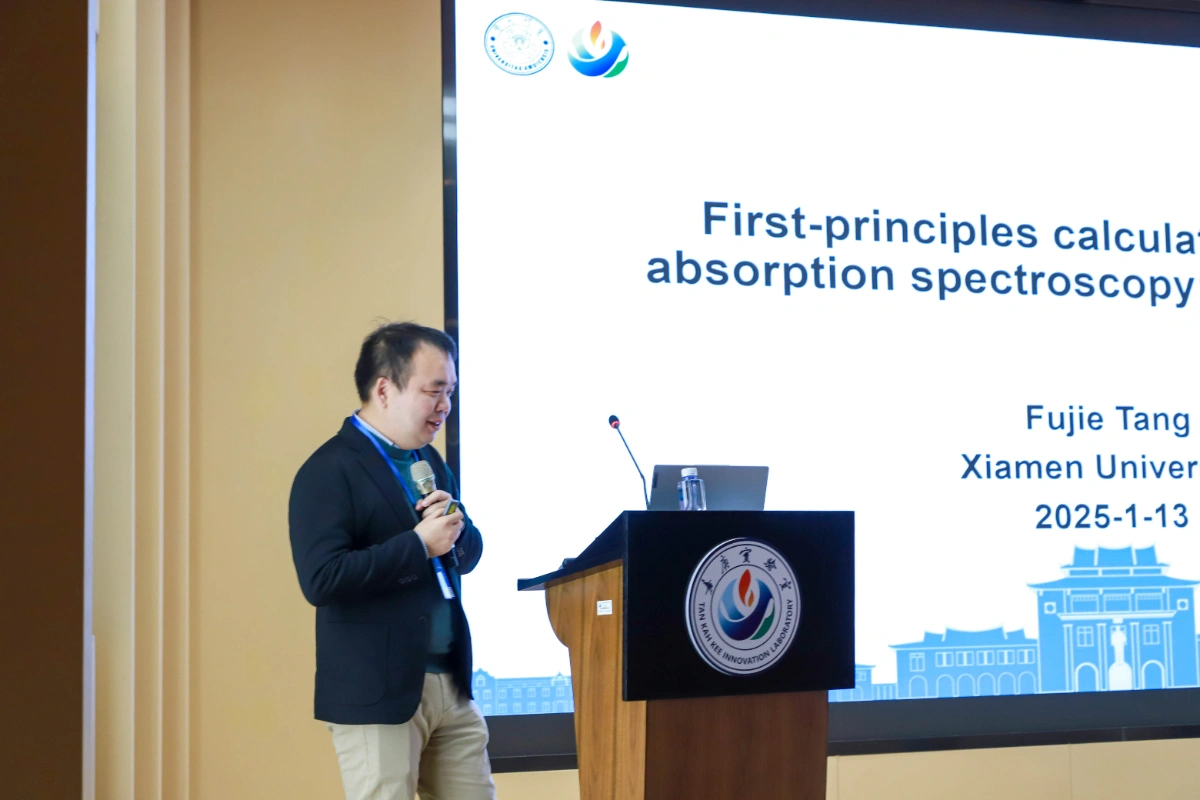
Researcher Duan-Yun Cao from Beijing Institute of Technology discussed the principles and applications of Atomic Force Microscopy (AFM), focusing on frequency-modulation AFM and its simulation advantages. Using theoretical models such as harmonic oscillators and probe particle models, he illustrated the applications of different CO-functionalized tips in studying aromatic organic systems and hydrogen-bonding networks of interfacial water molecules.
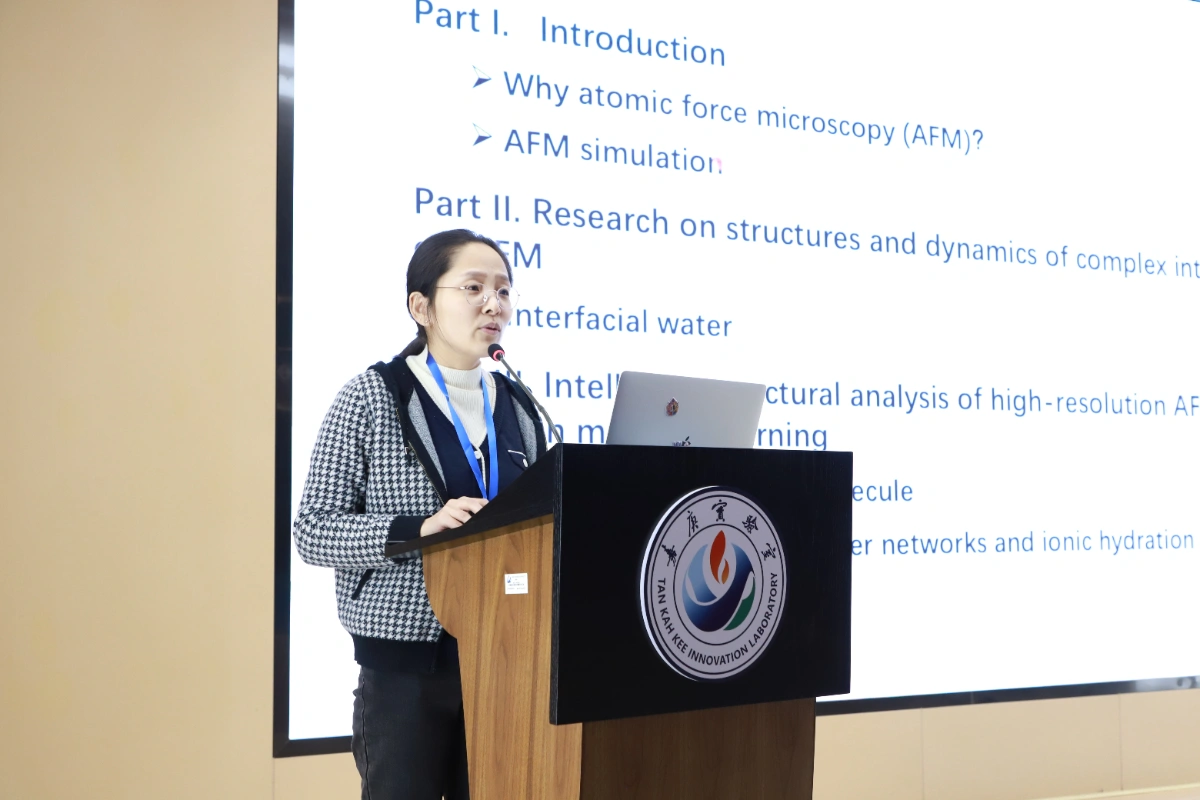
Researcher Lin Yao from DP-TECH shared insights on the basic principles of Powder X-ray Diffraction (PXRD) and its cutting-edge integration with artificial intelligence (AI). She presented recent advances in using AI models to analyze PXRD data, overcoming limitations of traditional methods, and demonstrated how complex diffraction patterns can be used to accurately predict crystal structures.
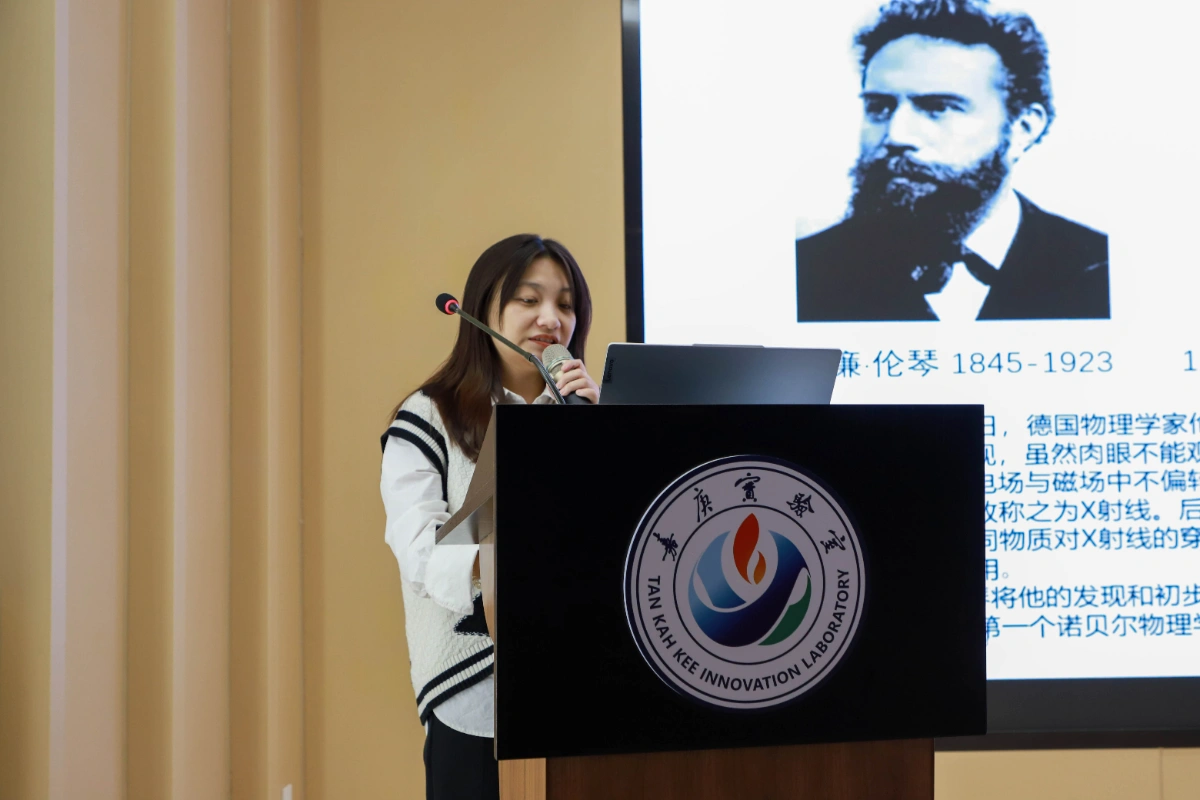
Researcher Jiawei Miao from DP-TECH focused on the intelligent characterization and application of Electrochemical Impedance Spectroscopy (EIS). He introduced the principles and measurement techniques of EIS, its typical applications in battery materials, and discussed current challenges in EIS measurement and fitting. He also presented five case studies on the integration of EIS with AI, showcasing how AI accelerates intelligent development in electrochemical research.
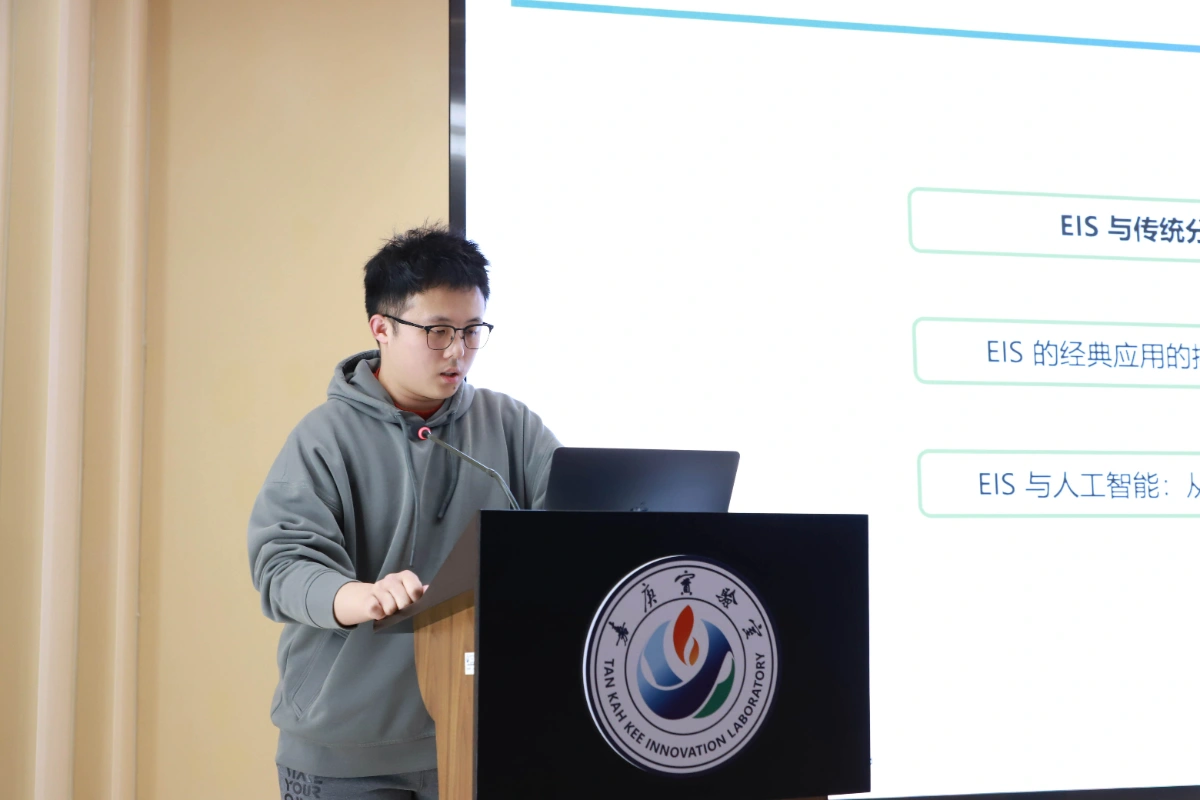
Researcher Yanhui Hong from DP-TECH explained how deep learning combined with electron microscopy image analysis can overcome the high barriers, time consumption, and inconsistency issues of traditional methods. He further demonstrated how material characterization and analysis can guide material improvement, presenting two case studies that highlight the immense potential of deep learning in materials science and open new pathways for material development.
.webp)
Researcher Weijie Zhang from DP-TECH focused on AI-driven mass spectrometry (MS) data analysis. His presentation covered MS data generation and instrumentation, spectral interpretation of small molecules in metabolomics, data analysis of large molecules in proteomics, and AI-powered high-performance search engines and large language models for spectral prediction. Through case studies and technical summaries, he illustrated how AI enhances efficiency and expands the application potential in complex MS data processing.
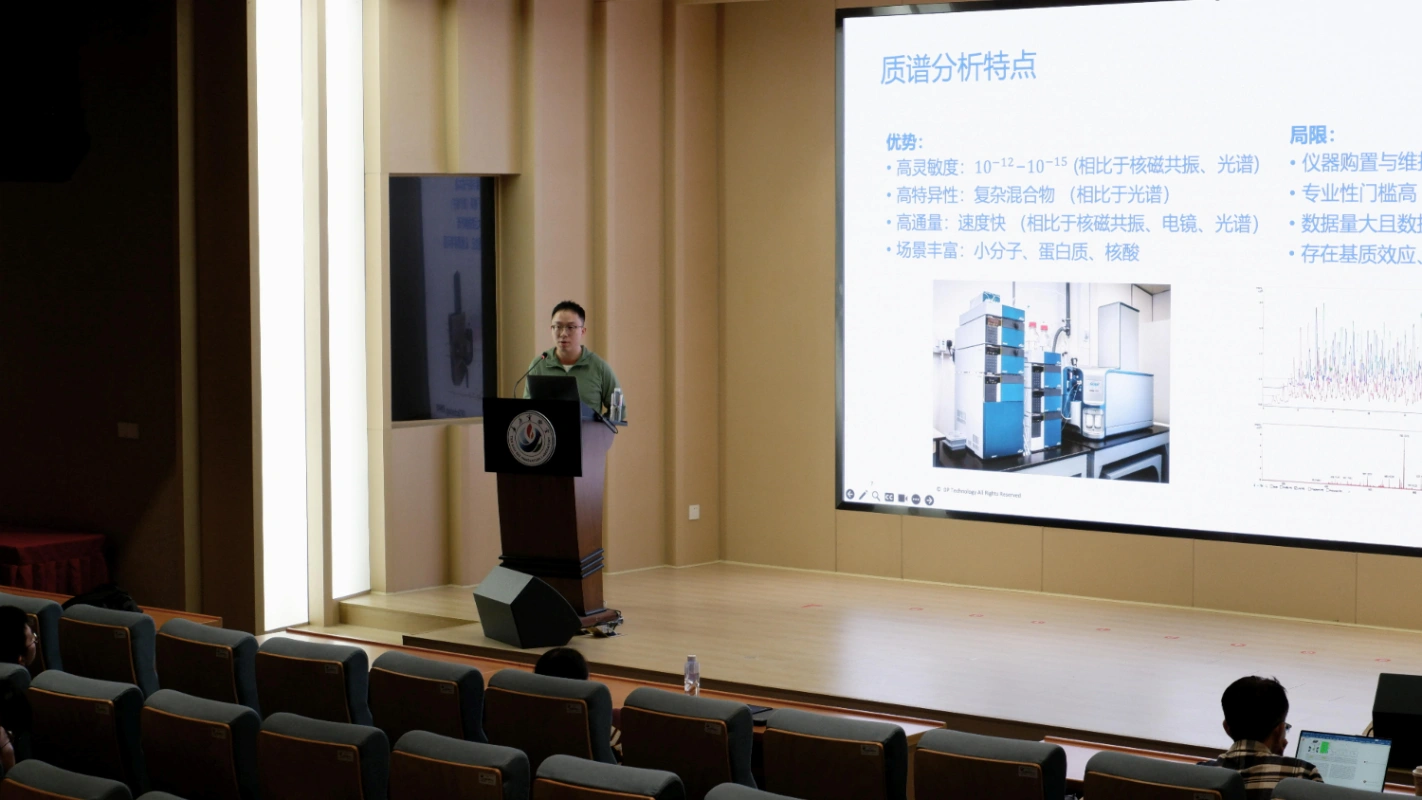
Yucheng Jin from Xiamen University discussed the challenges in data acquisition and analysis in scanning transmission electron microscopy (STEM). He introduced an AI-generated model that enables high-quality simulation data with minimal experimental input, offering a powerful tool for solving material characterization problems from a microscopic perspective.
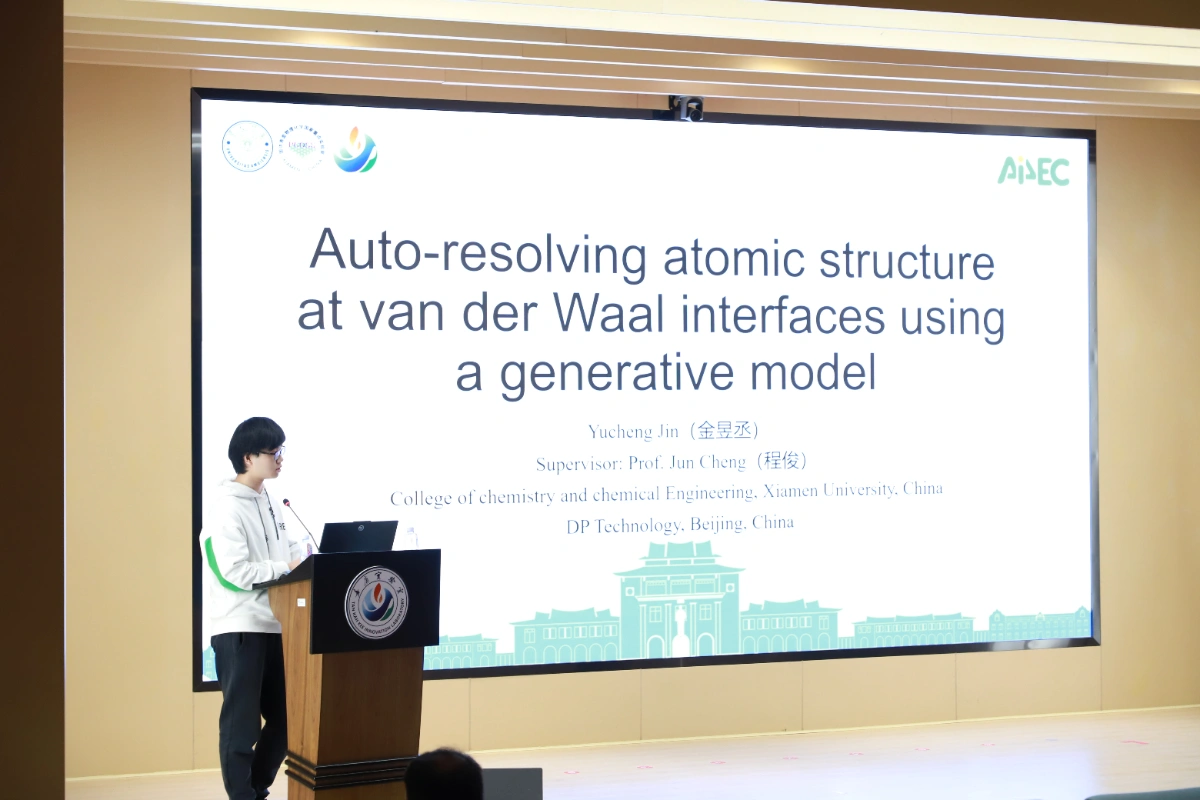
Xianglong Du from Xiamen University presented on theoretical methods for calculating interfacial vibrational spectra, using the alumina-water interface as a case study to demonstrate how to establish relationships between molecular structure and spectral features. He also briefly introduced ongoing work on vibrational spectra calculations for more complex systems.
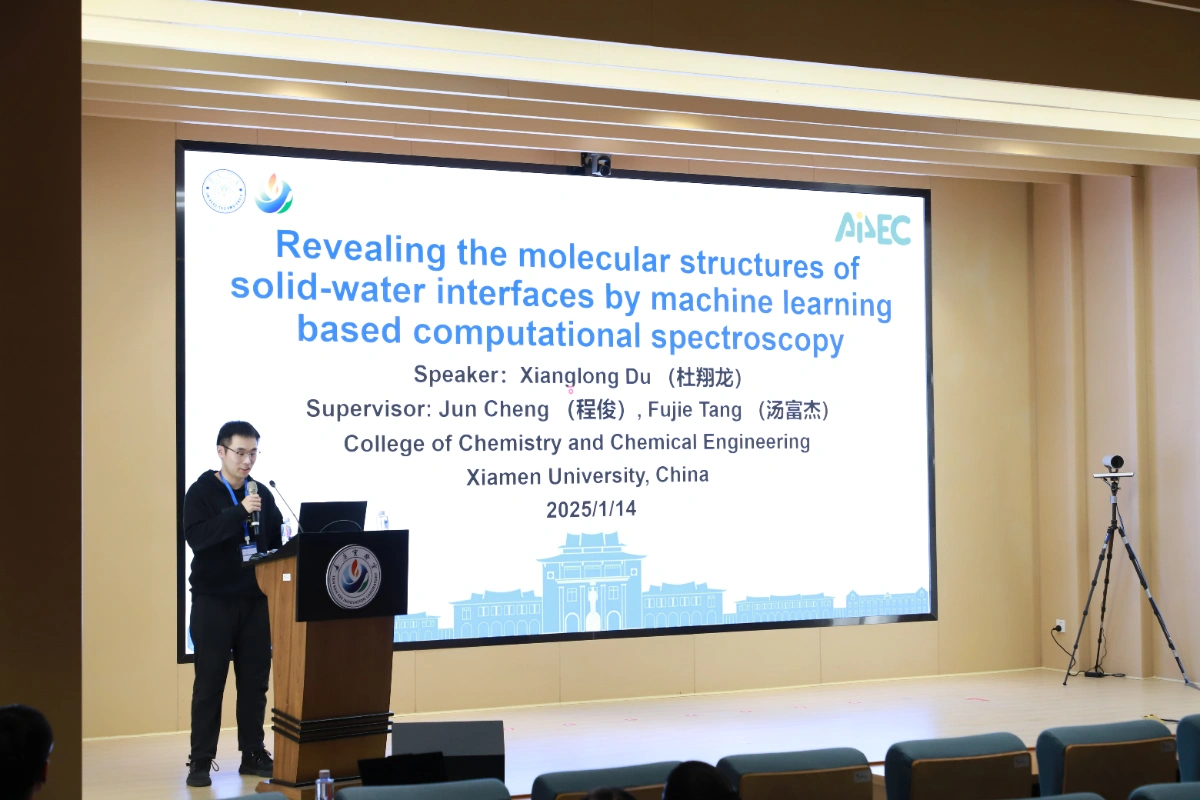
Qi You from Xiamen University began with the fundamentals of Nuclear Magnetic Resonance (NMR) and introduced machine learning-driven methods for dynamic NMR spectral calculations. He showcased their applications in complex electrochemical systems such as battery cathode materials and electrolytes, revealing intrinsic connections between spectroscopic signals and material microstructures.
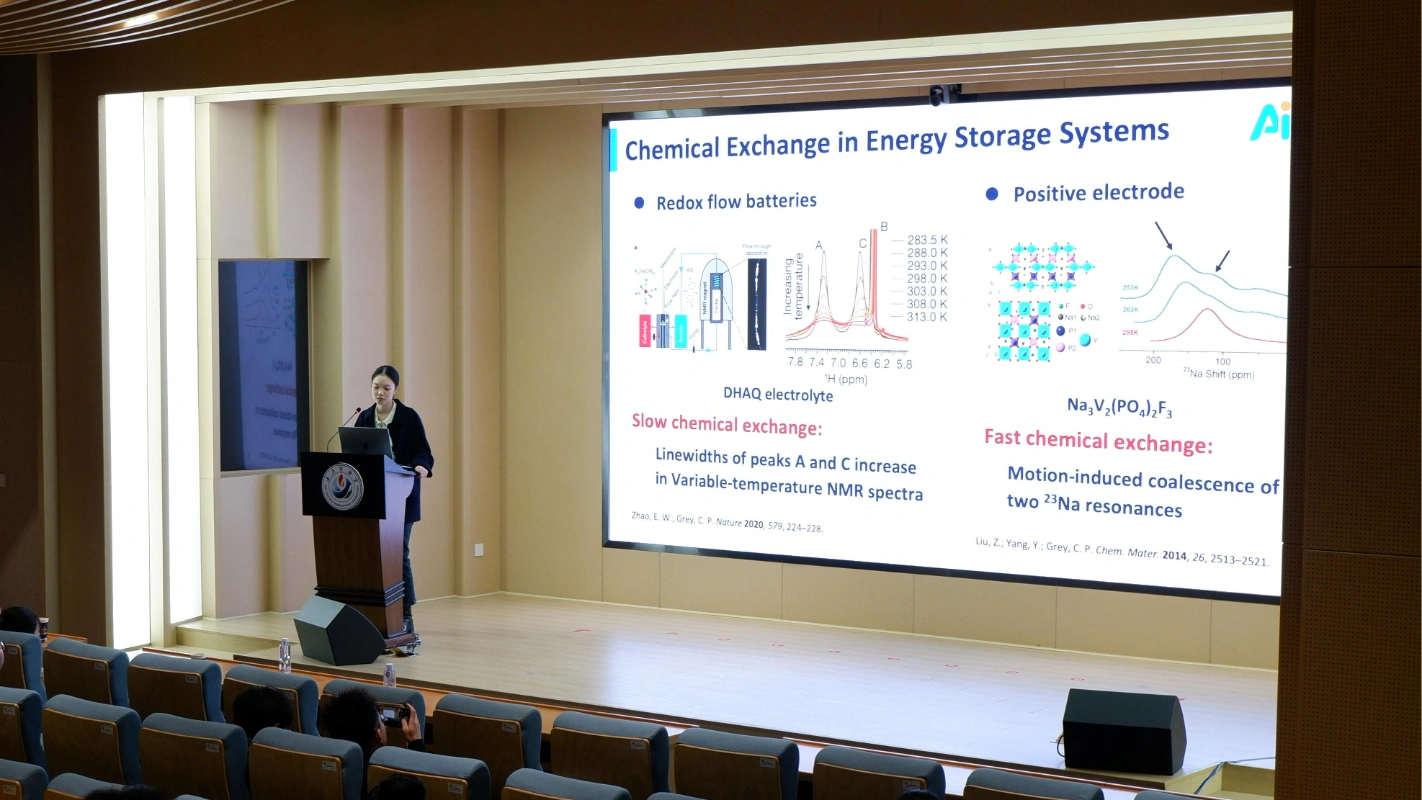
Fanjie Xu from Xiamen University introduced NMRNet, a deep learning framework for predicting NMR chemical shifts. By leveraging pre-training and fine-tuning strategies, along with a comprehensive benchmark dataset curated by the team, NMRNet achieves state-of-the-art performance in both liquid- and solid-state NMR shift predictions.
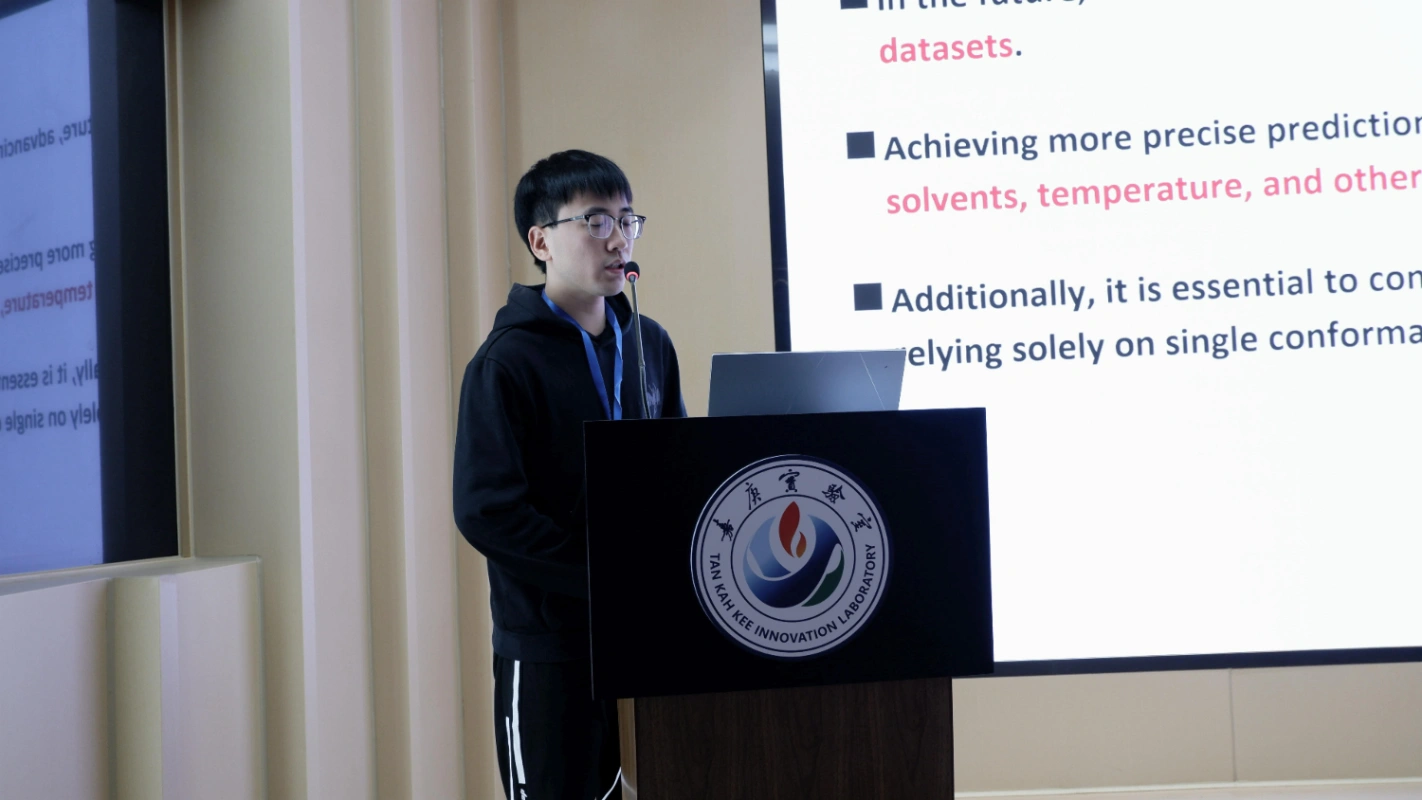
04 Hands-on Tutorials
In addition to the expert talks, the workshop provided practical tutorials to deepen participants' understanding of AI and computational spectroscopy applications at complex interfaces. Supported by the IKKEM Intelligent Computing Center and the Bohr Research Platform, the tutorials covered theoretical guidance and hands-on training in:
- X-ray absorption spectroscopy (XAS) workflows
- X-ray diffraction (XRD) spectral analysis models
- Electrochemical impedance spectroscopy (EIS) analysis models
- Interfacial vibrational spectroscopy workflows
- NMR spectral calculation workflows and prediction models
- Electron microscopy image analysis models
Over the three-day workshop, the IKKEM Intelligent Computing Center and operations team successfully supported over 400 homework submissions from more than 50 participants, many of whom were first-time users of high-performance computing (HPC) resources.
05 Outlook
On the afternoon of January 15, the three-day First Workshop on Intelligent Computing for Spectroscopy at Complex Interfaces concluded successfully. The event marked a significant milestone in promoting the deep integration of artificial intelligence and computational spectroscopy, empowering innovation and accelerating real-world research applications. We look forward to future workshops and to continuing our collective journey toward advancing AI-driven intelligent computational spectroscopy.
Additional Information
Selected presentations will be uploaded to the AI4EC official website and the Bohr Research Platform in the coming weeks. Stay tuned!
